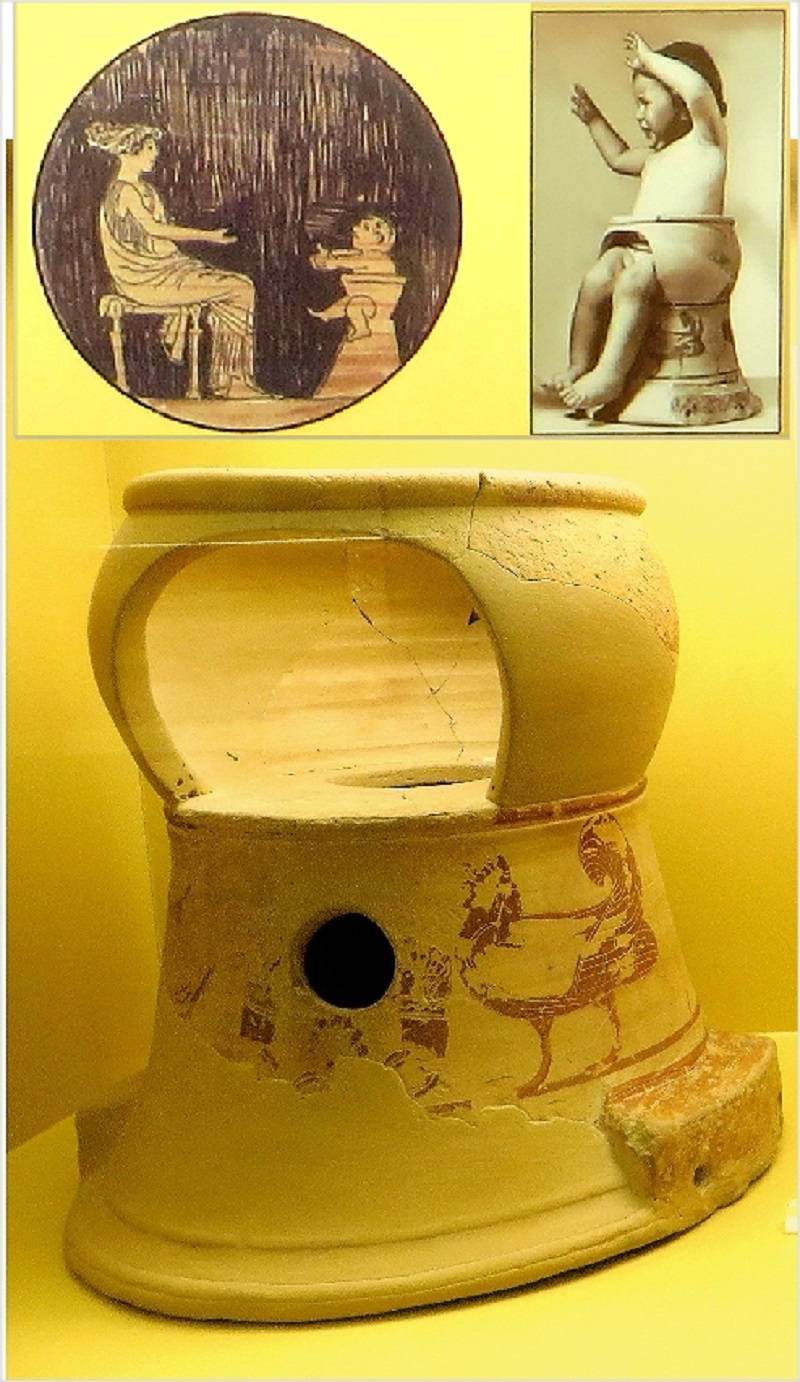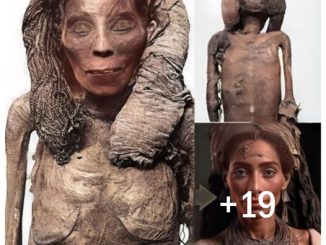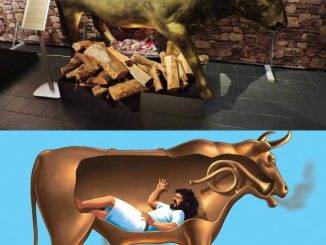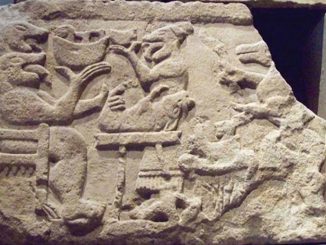In the realm of ancient Greek art and archaeology, glimpses into everyday life are often captured through the intricate details of artifacts. Among these treasures are a fascinating pair: an ancient Greek kylix depicting a baby in a pottychair calling to his mother, dating back to circa 480 BCE, housed in the Royal Museums of Art and History in Brussels, and a 6th-century BCE potty discovered in the Athenian Agora, now on display at the Agora Museum in Athens. Together, these artifacts provide a window into the customs and practices surrounding childhood in ancient Greece, offering valuable insights into the lives of ordinary people in antiquity.

Exploring the Ancient Greek Kylix: A Glimpse into Motherhood and Childhood
The ancient Greek kylix from the Royal Museums of Art and History in Brussels offers a poignant portrayal of domestic life in antiquity. Depicting a baby sitting in his pottychair and calling to his mother, the scene captures a tender moment of interaction between parent and child. This exquisite artwork serves as a testament to the importance of family and caregiving in ancient Greek society, shedding light on the intimate relationships that shaped daily life.
Unearthing the 6th Century BCE Potty: Insights from the Athenian Agora
The discovery of a 6th-century BCE potty in the Athenian Agora provides further evidence of the everyday objects used by ancient Greeks, offering a tangible connection to their daily routines and practices. Found amidst the bustling marketplace of ancient Athens, this humble artifact speaks to the realities of childhood hygiene and toilet training in antiquity. Its presence in the Agora Museum allows visitors to contemplate the similarities and differences between ancient and modern childhood experiences.

Interpreting Childhood in Ancient Greece: Insights from Archaeology
Through the study of artifacts like the ancient Greek kylix and the 6th-century BCE potty, archaeologists gain valuable insights into the lives of children and families in ancient Greece. These objects offer clues about cultural attitudes towards infancy, childcare, and parental responsibilities, as well as broader societal norms and values. By piecing together the material evidence left behind by past civilizations, archaeologists can reconstruct the social fabric of ancient Greek society and gain a deeper understanding of its complexities.
The Meaning and Benefits of Archaeology for Us Today
The study of artifacts such as the ancient Greek kylix and the 6th-century BCE potty not only enriches our understanding of the past but also provides valuable lessons for the present. Archaeology teaches us to appreciate the diversity of human experience across time and space, fostering empathy and understanding for cultures and societies different from our own. By preserving and studying our collective heritage, archaeology helps us to connect with our shared human history and cultivate a sense of stewardship towards our cultural legacy.

In conclusion, the ancient Greek kylix and the 6th-century BCE potty offer intriguing glimpses into the world of childhood in ancient Greece. Through these artifacts, we gain insight into the intimate moments of daily life, the bonds of family and community, and the cultural practices that shaped ancient society. As we reflect on the significance of these artifacts, let us also consider the broader implications of archaeology for our understanding of the past and its relevance to our lives today. Through our engagement with archaeology, we not only uncover the stories of those who came before us but also enrich our own lives with a deeper appreciation for the diversity and resilience of the human experience
Read more : https://model.icusocial.com/author/bspvt01/?utm_source=KC&utm_medium=H&utm_id=3


